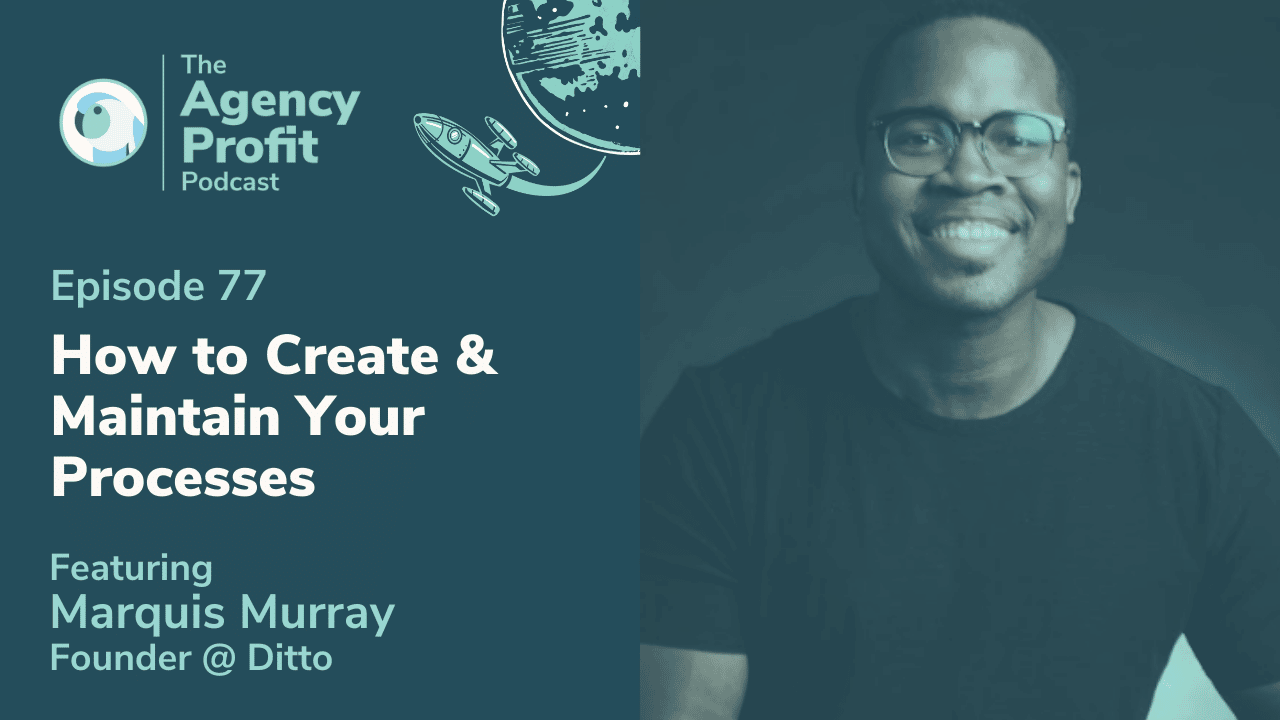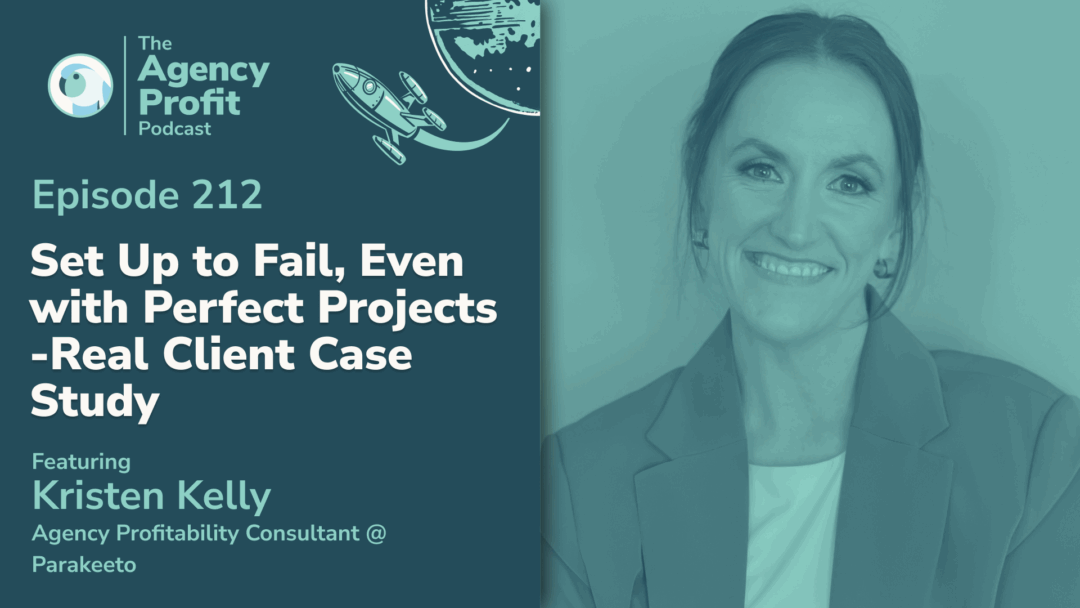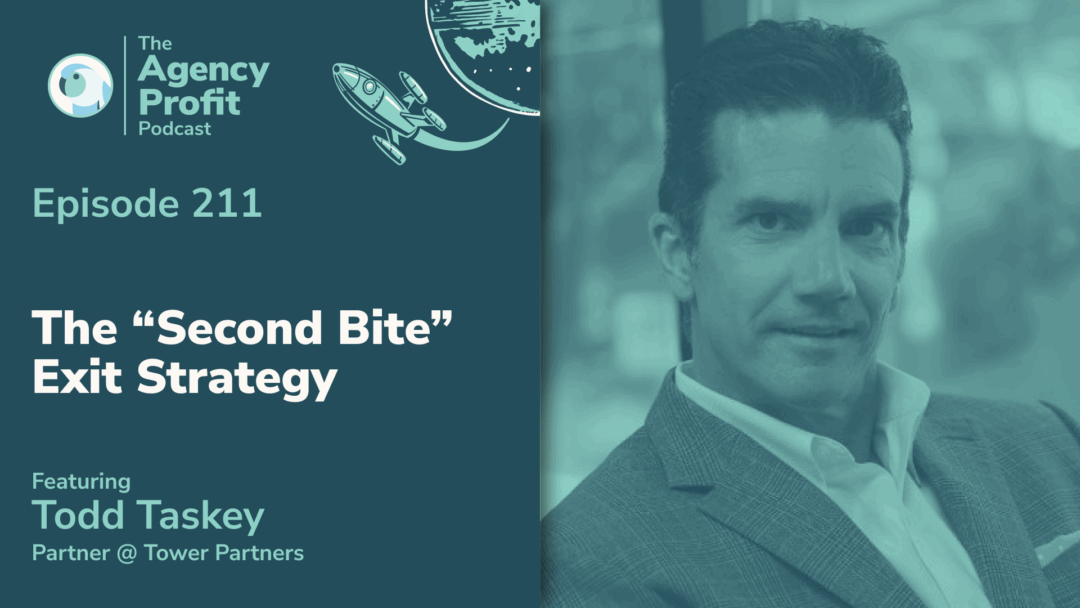Firstly, Happy Holidays and Merry impending New Year! Thank you for listening. As we bid farewell to the year that was 2021, we’re talking about what makes us happy here at the Agency Profit Podcast – the importance of documenting the process!
Today, we’re joined by Marquis Murray as he guides us through how to get our processes started, plus how to maintain them in a bid to attain the holy grail – higher profits.
About Marquis Murray…
Marquis Murray is the Founder of Ditto, an Asana Solutions Partner. He works with agencies to create clarity around the work done inside of organizations through creating SOPs, systems, plus processes and automation to make work easier while optimizing higher profits.
When he’s not optimizing workflows, you can find him either reading a book, honing his keen photography skills, kayaking, or playing bass. He also enjoys heading out for a walk with his family, getting to know more about the small town they call home.
Points of Interest…
- How Ditto Helps Agencies 1:50
- Process Issues Ditto Has Witnessed 7:17
- Steps to Documenting Processes 10:17
- Ensuring Team Buy-In for Process 16:34
How Ditto Helps Agencies With Process
In short, the goal of Ditto is to help businesses. As a systems and processes consultancy, Marquis and his team work with agencies and general organizations to standardize how they operate within their organizations.
Additionally, Ditto implements technology. By way of example; if there’s a new software solution requiring integration, they work alongside represented tech partners to implement said tools. Should there be custom integrations, Marquis et al work with their developers to make those automations and integrations between the platforms, resulting in clarity.
Anyone who’s been in the business knows that the duel combo of both process and tooling changes is something of a major headache. So, what possessed Marquis to build a business around such a hellscape? Why did he lean so hard into creating data?
“Like many entrepreneurs, we start businesses because there is a problem that we’re facing in our own business and we were seeking to eliminate. That for me, it was a little bit of trial and error and I kind of found my way here over time… I had left a corporate job prior to starting that agency where I was the digital marketing manager. And it was through working at that agency where I was, leading campaigns. I was doing a lot of the sales, I’d be a photographer when we couldn’t source one – everything was kind of under my purview. I would bring in contractors and resource as needed. So, I decided it was time for me to go out on my own and do it for myself.”
As with most start-ups, Marquis was doing every role himself – from HR to trading, to IT reports. As he was onboarding team members, he found himself spending the entire day training new team members instead of delivering the work he’d taken on, or answering his emails. How was the business going to grow?!
By utilizing tools such as Loom, Marquis started recording his screen and sending it to his team members. It evolved from there and was propelled further by the onset of the Pandemic in March 2020. To hear how Marquis utilized other tools, such as Asana and CRM platform HubSpot ***scoot to from 5:31 minute mark***
Process Errors Ditto Has Witnessed
Marquis has been operating in this space for approximately three years. Therefore, I ask him to outline some of the key patterns/mistakes he has seen agencies encounter – specifically when it comes to figuring out how to create systems for their business. Additionally, how they deliver work in a way that’s going to scale.
“The biggest problem we see is when an agency starts too late in documenting their processes. When it comes to tools and software – we call it the shiny object syndrome – they’re just bouncing from tool to tool, hoping that will fix their problems. Really, it’s about process, and they don’t have any.”
So, what impedes an agency from starting to document its processes at the optimum time? In short, not knowing when to let go… Entrepreneurs are “subject matter experts”, and – over time – they spread themselves thin, personally investing in areas that no longer require their presence. They start thinking “I don’t have the time to stop. I don’t have this time to document because I’m so busy!”
Meanwhile, their onboarding new team members who have ideas of their own, and so you get to a point whereby you’re five to 10 years down the line – a fully-fledged agency – with no standardized way to operate. It’s hard to, at that point, even pick things apart to document them. Cause you don’t know where to begin…
Steps to Documenting Process
Starting to document your processes for the first time can seem a daunting prospect, but that doesn’t necessarily have to be the case. One item that requires unpacking is the correlation between process detailing versus the optimum level of fidelity. So, what does a good process look like, and how does one get started?
“If you’re short on time or you feel the task is overwhelming – you can just start a list. It could simply be a note in your phone, or an audio recording where you just wax lyrical as things pop into your head. As you do so, you’ll be more cognisent of what needs to be documented. You’re not even getting into process at that point; it could just be a recognition of what needs to be handed off to someone else.”
For example, start a list of things that ONLY you, as a business owner, can undertake. You need to vision cast; network; possibly undertake sales. In many cases, leaders within a company will lead sales. Either way, the lead question that should be at the forefront of any business owner when laying down this initial list is what creates the biggest revenue. If this seems too convoluted; ***listen to Marquis’s helpful “toast analogy” regarding delegation from 12:11 minute mark***
To summarize…
1. Build the list
2. Start with the process at the highest level
3. Let that process get more detailed over time as your team takes a hold of it and starts to fill in the gaps
This brings an interesting level of insight. There is a symbiosis between how detailed a process needs to be and the seniority of your team. You’ll find that a more senior team won’t require a higher level of process because you’re relying on their experience, their judgment to think for themselves in a situation. They don’t necessarily need to rely on documentation. ***I expand on this more from 14:31 minutes onwards***
Side note: our Agency Profit Toolkit is a one stop shop for you to be able to outline some of these crucial profitability numbers to a potential buyer. Spreadsheets, templates and training videos, you name it, it’s all in the toolkit. Grab yours free at the link below:
“Everything is Process”
Nora Ephron’s mother used to say “Everything is copy”. The same adage goes for process. You must start applying this ethos as you’re delivering services to your clients.
Every time you deliver that service or that product, you work with your team to figure out what went well, what didn’t go well, and what can be done better in the future. If you can take those lessons learned, revisit your processes and improve them at that point, then you can tie it back to profitability. That’s where you find your margins.
You always need to be observing your processes as a living, breathing document.
Ensuring Team Buy-In For Process
How do we get the buy-in from the team and create that culture that permits the organization to take care of process, as opposed to always having it rely on us? No doubt we have people reading thinking, “Well, I tried to write it down and tell my team how to do it, and guess what? They didn’t do it the way I told them to. So I don’t believe that we can do this without it actually just being my job!”
Sound familiar? Marquis has heard that certain refrain a few times too and – guess what – buy-in is all about your work culture.
“It starts with leadership – like anything does. However, we have created templates for not only the projects we execute, but also the SLPs. So, how we at Ditto document them, is standard across the board. This makes it everyone’s responsibility. So, when we onboard team members, we get them to review our SOP index and all of our texts so that they can get familiar with how they’re documented.”
Then for each role, when they come on, they’re involved in constant improvements. Similarly, when they are offboarded, anything that you haven’t documented, that your team takes on as a project, request them to document that as well. Again, this won’t be a problem if you have cultivated a positive work culture.
This is really central to our ethos; the team has to be connected to how this work actually improves what they’re doing. It will bolster their work-life balance in the long run and this comes down to how well you as a business owner can predict the scope of client work and, when necessary, try to facilitate the team to devise their own optimum conclusions.
***We explore this, and the prospect of ‘new ideas submission’ as a private project for leadership, further from 17:49***
Key Takeaway…
Some concise pointers to set you on the path to documenting processes…
- You need a work management tool
- Training and adoption is more important than you think
- You don’t have to overcomplicate it, start slow
- Rely on your team and – most importantly – don’t be the bottleneck
See more from Marquis…
Did you learn anything new from this episode? Let us know in the comments below! We have helpful blogs designed to bolster your agency profitability, such as How To Calculate Your Billable Employee Cost-Per-Hour.
Our next installment of #APP, on January 12th, will see us chat with Megan Keuthen. Our previous blog with Chris Bantock is here…
Agency Profitability Tool Kit
If you’re looking for more resources to help you improve your agency’s profitability, check out the Agency Profitability Tool Kit. It’s full of templates and checklists used when consulting clients. This helps them improve profitability by over 100% in under 60 days.








0 Comments